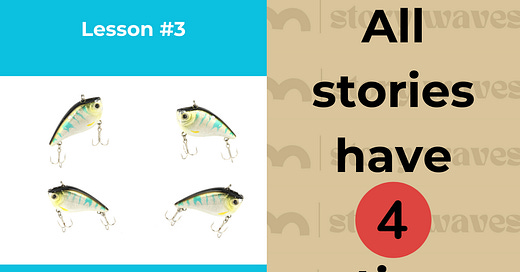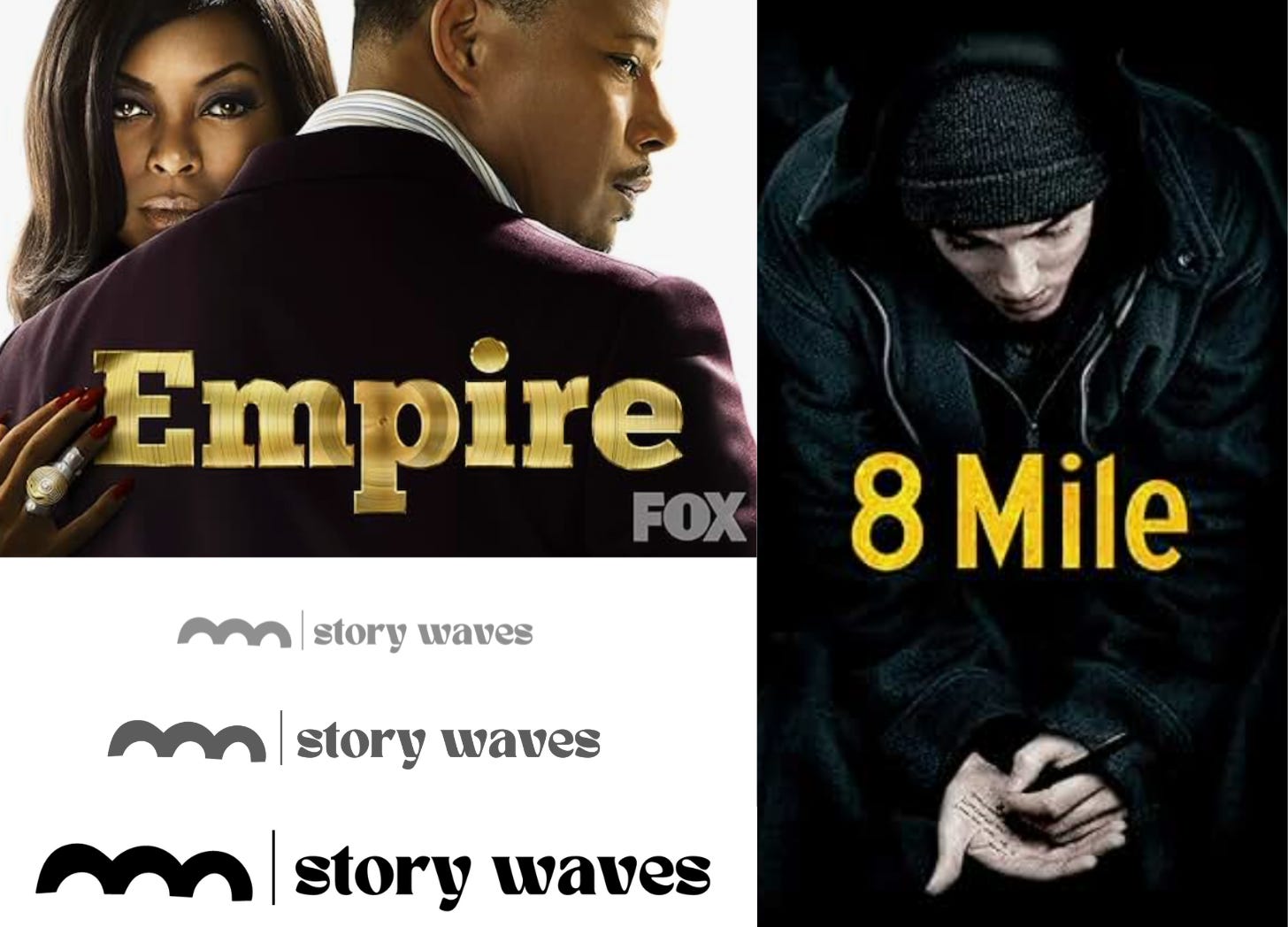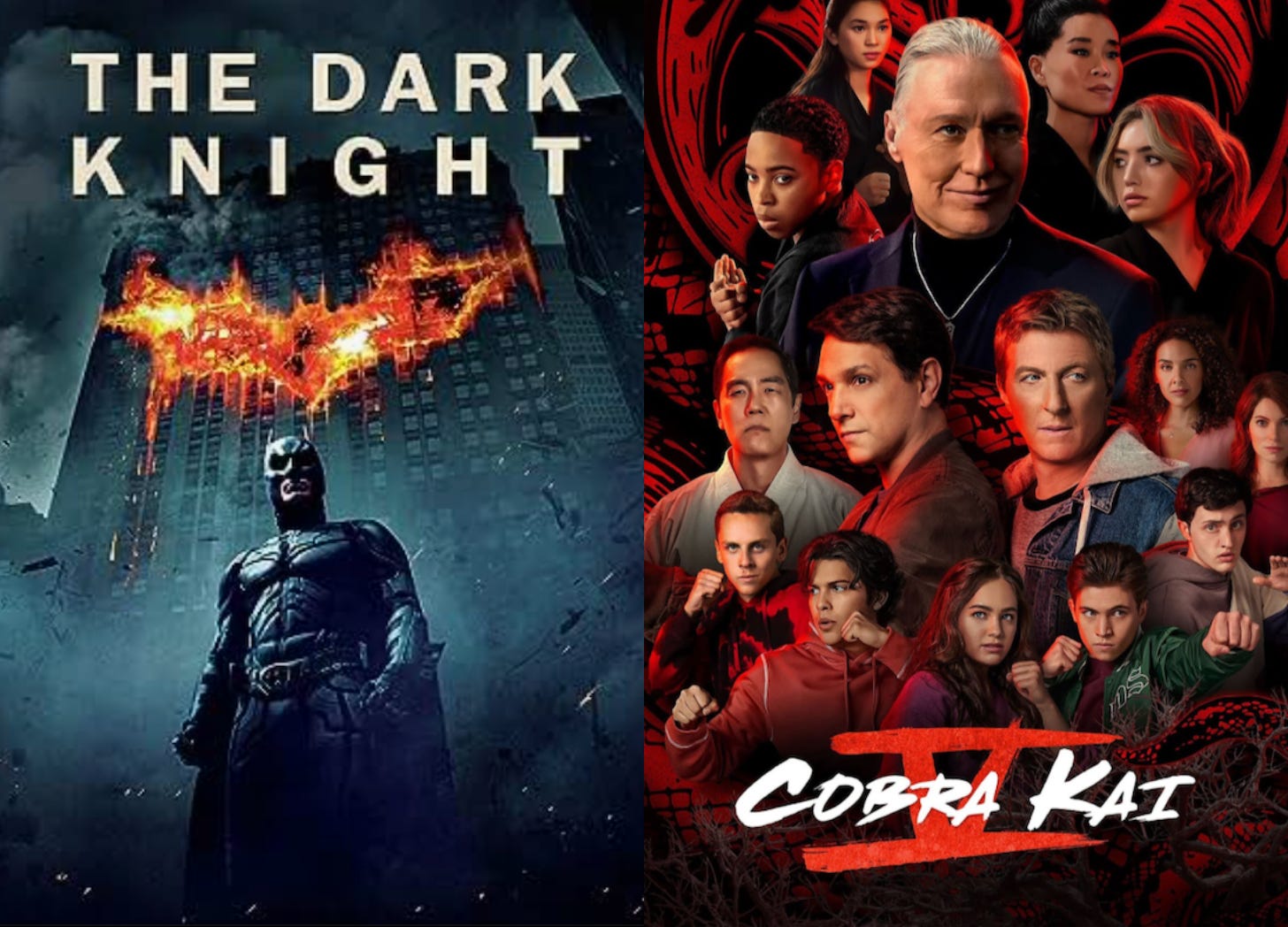All stories revolve around one of FOUR CORE STORY ACTIONS.
This lesson is not about genre.
In this post, you will discover the following key points:
The Four Core Story Actions: Win, Escape, Stop, Retrieve
How to connect the character’s desire to your Core Story Action
How a Core Story Action links thematically to the narrative drive (central conflict)
How to use Core Story Actions to plot structure, enhance audience engagement, elevate conflict, raise genre stakes, point to character transformation, and calibrate pacing
How Core Story Actions guide your thematic momentum
Film and TV examples of the four core story actions
Understand your CORE STORY ACTION and you will know how to craft your structure, characterization, plot, and pacing.
The FOUR CORE STORY ACTIONS
Every fictional story revolves around one of these FOUR CORE STORY ACTIONS.
Win
Escape
Stop
Retrieve
The four CORE STORY ACTIONS can be used thematically to fuel your story’s narrative drive. Narrative drive is your central conflict (protagonist vs. antagonist). A love story’s Core Story Action is to win someone’s love. A teen comedy’s Core Story Action is to retrieve sex. A murder mystery’s Core Story Action is to stop the killer. You could say the WIZARD OF OZ is about escaping Kansas.
How to connect the character’s desire to your Core Story Action
When dreaming up a new story, focus on ONE Core Story Action to express your story’s thematic momentum as it relates to your main character’s desire line.
WIN: What does your main character want to win?
ESCAPE: Why does your main character want to escape?
STOP: What does your main character want to stop?
RETRIEVE: What does your main character want to retrieve?
Although the four major actions are not mutually exclusive, and many stories combine them, selecting one will simplify your story development process.
Core Story Action links thematically to the narrative drive
Focus on one Core Story Action to assist you in plotting your narrative drive, which is your story's central conflict: the fight between your main character and their opponent.
Narrative drive = central conflict
Central conflict = protagonist vs. antagonist
Now focus on ONE Core Story Action to express the opponent’s plan (central conflict) as related to your main character’s desire line.
WIN: Who wants them to lose?
ESCAPE: Who wants to imprison them?
STOP: Who wants them to fail?
RETRIEVE: Who wants to retrieve it first?
Core Story Action means story movement on screen
Now that you know both sides of your central conflict in the context of your Core Story Action, you can show us a moving picture, even if it is only on paper.
On screen movement comes from a story’s narrative drive (central conflict) and is fueled by the main character’s desire line. Applying one of the FOUR CORE STORY ACTIONS to your scenes will push the forward action of your narrative drive.
Action on screen is not only someone moving or a car chasing. “Movement” can also be measured in emotional value change. Emotional value change takes the audience on a ride, like surfing a wave. If a scene has a change from positive to negatative, that means “something” happened; something moved in the story. That emotional movement dictates whether or not a character moves towards their desire or away.
To craft your scenes and narrative drive to show both physcial and emotional movement, apply ONE of the CORE STORY ACTIONS and use it as a directive tool to affect change (positive or negative) within each scene. Do this consistently to ensure the constant movement necessary for storytelling on screen.
For example, if your main character’s desire is to escape—yet the opponent wants to keep the heroine imprisoned— the CORE STORY ACTION of escaping will thematically fuel the central conflict and narrative drive of the story by forcing your protagonist’s plan of freedom to smack up against the opponent’s plan of keeping them imprisoned.
Depending upon the specific point in your act structure, you can show your main character moving closer to their goal (positive value change) or further away (negative value change) within your CORE STORY ACTION context.
Plot your story structure—acts, sequences, and scenes—around either winning, escaping, stopping, or retrieving as an “archetypal force” will help you consistently achieve the following:
Hook the audience with a forward motion
Fuel the narrative drive and increase central conflict
Escalate the specific genre stakes
Steer the story and character’s arc toward transformation
Positively impact the pacing of your story
Add CORE STORY ACTION to your act structure
Use Core Story Action to craft your opening and setup. If you chose “to win” as your thematic momentum, your story could be about many possibilities. Think of a card game, a sports event, a singing contest, or a court case. Each story is about winning, so if your story is about winning, focus on writing each scene about “winning,” “losing,” “giving up,” or “determination.”
Move to your inciting incident and end of act one, and brainstorm variations on the outcomes of the prospects of winning. Include the efforts, trials, and tribulations around winning. Map the twists and turns required to emotionally illustrate all the dramatic actions associated with winning and losing that spark the character’s desire around their weakness and show them committing to reach their goal.
In act two, show how your flawed main character continues to fail to get what they want until the driving force of the CORE STORY ACTION (WIN, ESCAPE, STOP, RETREIVE) forces them to overcome their inner and outer obstacles and to gain (truly/falsely) on their opponent.
In act three, use the CORE STORY ACTION to show how your main character changes their moral compass, changing their perspective and beliefs about their ability to WIN, ESCAPE, STOP, RETRIEVE.
For your ending, plot your last page using the CORE STORY ACTION to show that your main character has won, escaped, stopped, or retrieved as a final goal.
Film and TV: Winning, Escaping, Stopping, Retrieving
Here are the Core Story Actions with examples from film and television.
WIN STORIES
Many “underdog” stories center around the pursuit of victory or success. This can manifest in winning a competition, achieving personal goals, or overcoming challenges.
Film: BLACK SWAN (2010) A psychological thriller that follows a ballet dancer's intense pursuit of perfection and success, leading to a transformative and haunting journey.
WHIPLASH (2014) This intense drama explores the competitive world of jazz drumming, focusing on a young musician's relentless drive to achieve greatness under the tutelage of an uncompromising instructor.
In ROCKY (1976), the protagonist, Rocky Balboa, aims to win against all odds in a boxing match against the heavyweight champion.
8 MILE (2002) is a drama set in the hip-hop music scene starring Eminem, portraying the struggles and triumphs of a young rapper trying to make a name for himself in Detroit.
LA LA LAND (2016) is a musical romance film that follows the aspirations of an aspiring actress and a jazz musician as they navigate the challenges of pursuing their dreams in the competitive entertainment industry.
TV: In TED LASSO, winning transcends the traditional concept of victory on the field. While the soccer matches provide a backdrop, the true emphasis is on the transformative power of positive leadership, teamwork, and personal growth.
GLEE was a musical comedy-drama series that focused on the journey of a high school glee club, exploring themes of acceptance, teamwork, and the pursuit of success in the competitive world of show choir.
In BREAKING BAD, Walter White's story is driven by the desire to score in the drug trade and secure his family's financial future.
EMPIRE follows the Lyon family as they navigate the music industry. The show explores the power struggles, family dynamics, and creative endeavors in their pursuit of winning dominance in the music business.
ESCAPE STORIES
The theme of escaping involves characters striving to break free from physical, emotional, or societal constraints. This can include escaping from captivity, oppressive environments, or personal limitations.
Film: THE SHAWSHANK REDEMPTION (1994) follows Andy Dufresne's quest to escape from Shawshank State Penitentiary and seek freedom.
TV: In STRANGER THINGS, characters often find themselves trying to escape from the dangerous creatures and situations in the parallel dimension of the Upside Down.
STOP STORIES
Stories that revolve around stopping focus on preventing or ending a threat, danger, or undesirable event. This can involve stopping a villain, a disaster, or a negative outcome.
Film: THE DARK KNIGHT (2008) sees Batman attempting to stop the Joker's chaotic plans in Gotham City.
TV: In 24, Jack Bauer's missions typically involve stopping terrorist threats and saving lives within a limited timeframe.
In COBRA KAI, down-on-his-luck Johnny Lawrence seeks redemption after 34 years and the event of the 1984 All Valley Karate Tournament by reopening the Cobra Kai dojo, reigniting his rivalry with the now rich Daniel LaRusso, only to discover they must combine fighting forces to win against the dangerous Kreese and his growing pack of students.
RETRIEVE STORIES
Retrieving is about obtaining something valuable or restoring a lost element. This can range from a physical object to lost memories or relationships.
Film: INDIANA JONES AND THE LAST CRUSADE (1989) involves Indiana Jones retrieving the Holy Grail to save his father's life.
MIDNIGHT IN PARIS follows a nostalgic screenwriter, Gil Pender, while on a trip to Paris. He mysteriously goes back to the 1920s every day at midnight to find the dead famous writers that will inspire him to write his nostalgic novel.
TV: In FRIENDS, Ross Geller tries to retrieve his love life and relationships, particularly with Rachel Green.
In WHITE LOTUS, the guests and employees of a resort chain become enmeshed in each other’s psychosocial dysfunctions, forcing each one to retrieve their moral compass.
As you develop your story, you may need to combine STORY ACTIONS, like showing a character retrieving a valuable item while simultaneously trying to escape a dangerous situation. The archetypal force of these 4 STORY ACTIONS allows you, the storyteller, to create multi-layered, rich, and dynamic narratives across genres.
What’s your story action?
Why subscribe?
Subscribe now for story waves of insight and creativity! Never miss an update.
Get the discounted $79 ANNUAL subscription or $8/month to receive:
Growing Archive of all Story Wave posts, writing workshops, teaching video, downloadable class notes, and templates
Join Story Waves Writing Challenges
Story Waves Community of writing support and paid posts
Get the discounted $159 FULL ACCESS subscription to receive:
Access to STORY GROUP and work with me every first Sunday of the month, 2-3:30 pm EST, where I demo page rewrites live from volunteers and teach from my Story Waves lessons.
Receive a $100 discount on all Story Consultations.
p.s. Replays will be available for workshops. Watch them at your convenience.
✨ Invest in yourself and your Story! Commit to one year with my guidance and get the discounted annual subscription. You, your writing, and your career are worth it.
Thank you for supporting Story Waves! Consider becoming a paid subscriber and get the benefits of Story Group and Story Consultation discounts. See FULL ACCESS.
I look forward to reading your stories and connecting in 2024!
Best wishes,
Kelly E. Keough








